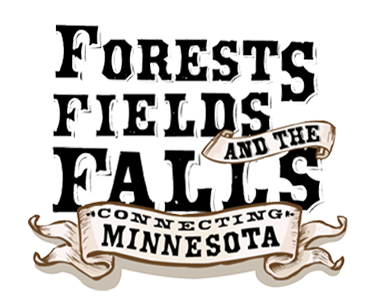Primary Sources
Lumbering
Camp Was Two Days' Walk from Aitkin:
- "The First Day Out..."
- Crossing the Mississippi
- Spending the Night
- Cook Shack
- Sleep Camp
- Blacksmith Shop
- Stables
- Filer's Shop
- Office and Store
- Outhouse
What's so Great about White Pine?
"We Left Camp Before It Was Light in the Morning..."
"But in Spite of These Drawbacks..."
In 20 More Years, Minnesota's Giant White Pine Forest Would Be Entirely Cut.
- "....The Standing Pine Which Is Still Left..."
- Why Was All the Pine Logged?
- What Happened When the Pine Was Gone?
How Would a Lumber Crew Move a 2,000-Pound Log?
- Roads
- Loading
- Sledding
- Teamsters
- Unloading
A Recipe for Boston Baked Beans
"...Thirty Dollars a Month and Board for the Sawyers, Undercutters and Teamsters."
What Did They Do for Entertainment?
How Much Wood Is 40,000 to 50,000 Logs?
How Did They Get All Those Logs down Such Skinny Rivers?
How Did They Know Whose Logs Were Whose?
Sawmilling
- Sledding
- Marbles
- Baseball
- "My Family Lived..."
"...Other Wood Products Factories."
The Northland Pine Company Sawmill
- Pond Men
- Chief Sawyer
- Dogger and Setter
- Trimmer Operators
"The Vast Pineries Were Gone..."
Farming
Why Are There so Few Trees on the Prairie?
Want to Read the Full Letters?
The Grasshopper Plague of 1874
What Do They Burn in the Stove to Make Breakfast and Heat the House?
Did Many Women Really Take Homesteads?
Where Was the Carpenter's Land?
What Did the Railroad Do for the Town?
How Did They Build Houses out Here Where There Are No Trees?
What Did the Carpenters Do in the Winter?
What Did a Farmer Do in Spring?
What Happens to the Wheat after Harvesting?
Machinery, Productivity, and Debt
The Carpenter Farm: What They Have, What They Produce
Flourmilling
E.V's Article Was Published in 1886. Want to Read the Full Text?
E.V. Is Wrong about the First Mills. The First Mills Were Really....
What's so Important about St. Anthony Falls?
Washburn, Pillsbury, and Others Got Their Money from Another Minnesota Industry.
Why Did Older Mills Dislike Spring Wheat?
Was Minneapolis Flour Really That Good? Their Advertisements Said It Was.
"...Towns Sprang up as If by Magic..."
"...And the Bare Plains Were Turned into Wheat Fields"
"Twenty-six Great Flouring-mills..."
What Are the Effects of the Milling Industry on Farmers?
Did Farming Become Big Business?
An Official Diagram of a New Process Mill
- Was It Hard Work?
- More Machines than People
- "...A Skilled Class of Workingmen..."

